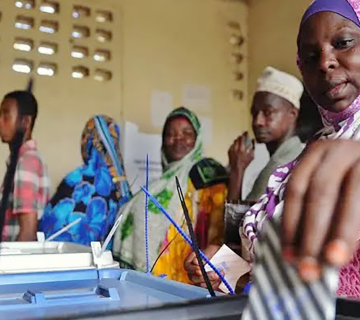Article 217 of the Constitution of Kenya (2010) requires the Senate to reconsider and enact, after every five years, the basis for allocating revenue to the 47 counties. Once enacted, the formula is used to guide the passage of the County Allocation of Revenue Bill, the primary legal tool for the release of money to counties from the consolidated account. In the recent past, the Senate has, in seven plenary sessions, failed to agree on a proposal from the Commission of Revenue Allocation (CRA). This stalemate, if prolonged, will delay the disbursement of funds to counties with a net effect of plunging counties into a cash crisis. While all senators have a right to advocate for more resources for their counties, they should ensure that in unlocking the impasse, the adopted formula promotes equity, national unity, as well as ethnic harmony in the country.
The Stalemate
At the heart of the impasse lies the variables for revenue sharing. On one hand, the proponents of the CRA proposal presented by the Senate Finance Committee argue that the population burden should be the paramount consideration in allocating resources to counties. On the other hand, opponents hold that besides population, development disparity and landmass are equally important. This proposal, if adopted ‘as is’, shall introduce significant changes to the current county revenue allocations. In effect, 19 counties, mostly those that are perceived as historically marginalized stand to lose a cumulative 42 billion Kenya shillings from their last budget, while the remaining 28 shall gain more resources.
To resolve the disagreement, two initiatives were floated in the Senate. The first initiative, which was rejected by the majority of the Senators, was sponsored by the Majority Whip, Senator Irungu Kangata. Kangata proposed that the formula be adopted ‘as is’, but its operation deferred by two years, to give room for other ongoing political initiatives such as the Building Bridges Initiatives (BBI) that are likely to result in an increased financial allocation to devolved units from the current minimum 15 per cent. The second initiative, awaiting debate and consideration is sponsored by the Nairobi County Senator, Johnson Sakaja. Sakaja’s proposal, popularly known as A+B, seeks to have all counties allocated the same amount they received in the last financial year and the formula, be applied in sharing of the remaining funds, if any.
Old debate
The debate on revenue allocation is neither new nor unique in the country. Its origin dates back to the aftermath of Kenya’s independence in 1963. Sessional Paper No.10 of 1965-Kenya’s economic and social development blueprint-prioritized areas with ‘high economic potential’ for higher financial allocations. This was based on the premise that gains derived from these areas will be used to develop less ‘productive’ regions in the country. While this consideration was informed by the need to maximize the meagre resources of a newly independent country, the policy in practice ended up exacerbating development disparity and entrenching marginalization in the country.
The creation of devolved governments under the new constitution (2010) was informed by the need to rectify this anomaly, and spur equal social-economic development, enhance service delivery, and promote national unity by recognizing diversity. While counties are still struggling with a myriad of challenges including fiscal inefficiencies and financial impropriety among others, significant progress has been made in the provision of social services. Devolution has also ensured government presence across the country.
Unlocking the Stalemate
As the Senate continues to haggle for a solution, the following considerations are key:
- Ethnicity
In the Journal of African Elections, Kwatemba (2008) observes, “One of the most enduring attributes of the legacy of colonialism in post-colonial Kenya was a sense of ethnic division that found expression not only in terms of group identity but also became a mobilising agent in pursuit of economic interests.’’ He adds, ‘’ethnicity found expression in Kenya’s politics because most Kenyans felt alienated from the state, a lacuna whose provenance lay in the colonial period.’’ Kwatemba’s assertions are not far-fetched. As it is widely known, Kenya’s devolved units are largely founded on ethnicity. For a start, the Senate needs to take note that any adverse variation of or increase in allocation to counties shall be interpreted along this line. The formula is likely to spur ethnic division and promote ethnic nationalism and thus affect the ongoing processes aimed at ending ethnic antagonism in the country.
- Development Disparities
Secondly, devolution as a tool of governance was, in part, created to address the adverse disparity in access to basic services such as healthcare, transport infrastructure and food security among others. Despite positive progress, these disparities still exist. Unfortunately, the counties set to lose revenue in the current proposal are the most affected. As such, the proposal is inimical to devolution and the agenda of equity among counties and may spell doom for the counties’ development agenda.
- Accountability
Finally, regardless of the allocation, the Senate should activate other tools at its disposal to ensure counties utilize their allocated resources for the maximum public good. Such tools include sealing corruption loopholes in the counties, stopping embezzlement of budgeted funds, limiting recurrent expenditures and ensuring timely disbursement of county resources by the National Treasury to give county governments enough time for budget absorption.
Elvis Salano is a Research Assistant at the HORN Institute
Photo: A previous sitting of the Senate (Photo Credit: The Star)



